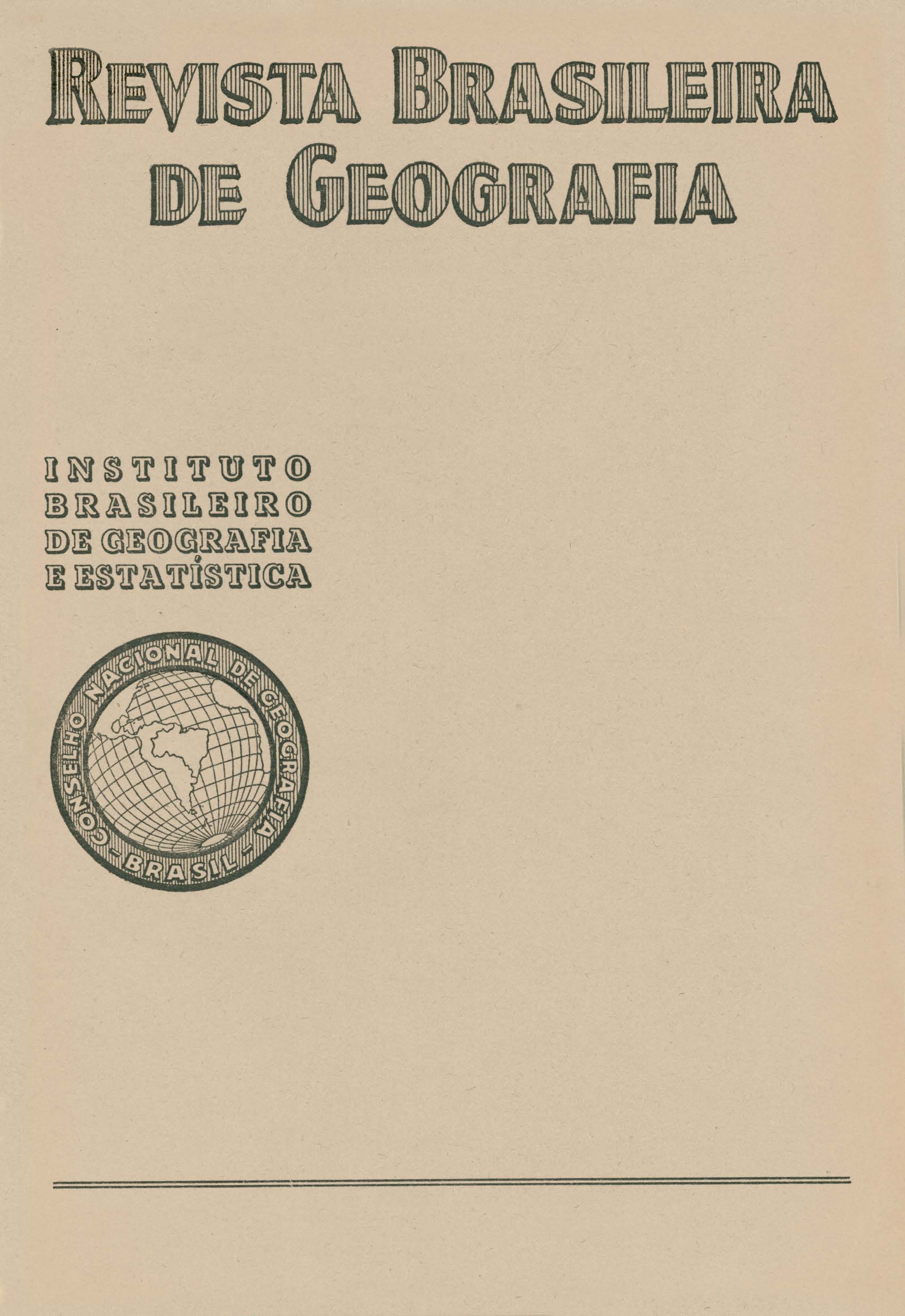A Patagônia vista por um brasileiro : notas de viagem
Resumo
In this article Professor Fróis Abreu, Tecnical advisor to the National Geographic Council,makes a resumé of his observations during a trip to Patagonia, in the Argentine Republic. In depicting aspects of a little known region his intention is simply to foster initiatives similar to the "beginners who travel past so many parts of our coast, still somewhat unknown and never described".
Leaving Buenos Aires, southward bound towards Baía Blanca, he flew over an immense plain of approximately 600 kms, abounding In cattle and covered with green pasture ( it was the month of May). The type of buildings is different to that of the Brazilian· "fazenda", as they are of corrugated iron and the cattle is housed in closed ·sheds on account of the climate. The only breaks in the landscape are those of the Serra Ventana and the profiles denote sedimentary or metamorphic series with pronounced tectonism.
Upon departing from Baia Blanca the aspect changes. The farms, fields and water disappear. It is the clear beginning of the transition to the arid land of Patagonia. After flying for 360 kms in a straight line the first oasis appears - St. Antonio do Oeste - a seaside hamlet. Another hour's flight over the same barren soil and there is another oasis - Trelew. It is gray and forlorn, but it is said that, towards the centre, there are good fruit and vegetables, thereby confirming that the wealth of Patagonia is a question of water.
Thence to Comodoro Rivadavia - 360 kms - the desert continues. The lie of the land becomes more irregular, for the Patagonian plateau nears the ocean. There are frequently narrow valleys (like true "canions") and buttes. which show the succession of horizontal strata of the tertiary period, whose disturbances have been of the fracture type, making of patagonia a series of “mesetas” of different size and heights.
In Comodoro the land is fiat, almost bare of vegetation, with salient profiles, owing to the more resistant nature of the son to erosion. They reach to the sea and then drop sheer down. On the north and south may be seen beautiful types of "falesias", extensions of which are constantly desintegrating. The top layers of clay are transformed In the dry season into thick and suffocating clouds of dust. With the rains the dust becomes slippery mud, covering streets and roads and forcing the use o f chains on the tyres.
The climate plays an important part In peopling the region, for it is selective and eliminates the weak and permits only strong to survive. The atmosphere is extremely dry, the author having verified 45 % of relative humidity. , ·
There is a constant wind and even gale blo%ing. Walking with the wind one has to step firmly 'so as not to be carried by it. Against it one must lean forward and turn sideways. Caps and berets take the place of the wide brimmed hat and automobiles are used to cover the long distances. According to information there ts one car to every 8 inhabitants. Even the construction is influenced for the houses are placed so as to offer the most shelter against the wind and the gardens are protected by baffles.
The population is very cosmopolitan. Once there were found in the YPF (Yacimentos Petroliferos Federales - Federal Petroleum Fields) 64 different nationalities among its employees.
It is only the existence of petroleum that explains so great a gathering of people in such lonely places and of weather conditions so unfavourable to a stable population. Everything there ts directly connected with oil and for this reason Comodoro Rivadavia has the reatures of a large stable town, with colieges, theatres, cinemas, commerce, church etc. The oil is exploited by the YPF. A power plant of about 30,000 driven by gas from the wells, supplies power to the town and the electrified works of the YPF.
The drilling of the wells is done by the rotary system In substitution of the old percussion system. There are about 25 drills, hearly all electric, at work daily In the Comodoro fields. Near the sea the depth ranges to about 600 metres, reaching up to 1.000 m towards the interior.Owing to lack of pressure in the wells the production is pumped and ls very irregular.
On kilometre 27 of the railway which runs to Colonia Sarmiento ts to be found the Cia. Diadema Argentina de Petroleo, affiliated to the Royal Dutch Shell group. Concluding his article, the author states that it was the search for water by the few
inhabitants of the place, In 1907, that struck on. The Argentinian made good use of this and
by steady work and, above all, strengthened by a feeling of faith and patriotism, overcame
all obstacles and transformed the desert into one of the most important and productive regions
of 'the Land. He exhorts Brazilians to applaud this great work of our neighbours as an example to be followed In the exploitation of the signs of existing petroleum In some regions of Brazil.






